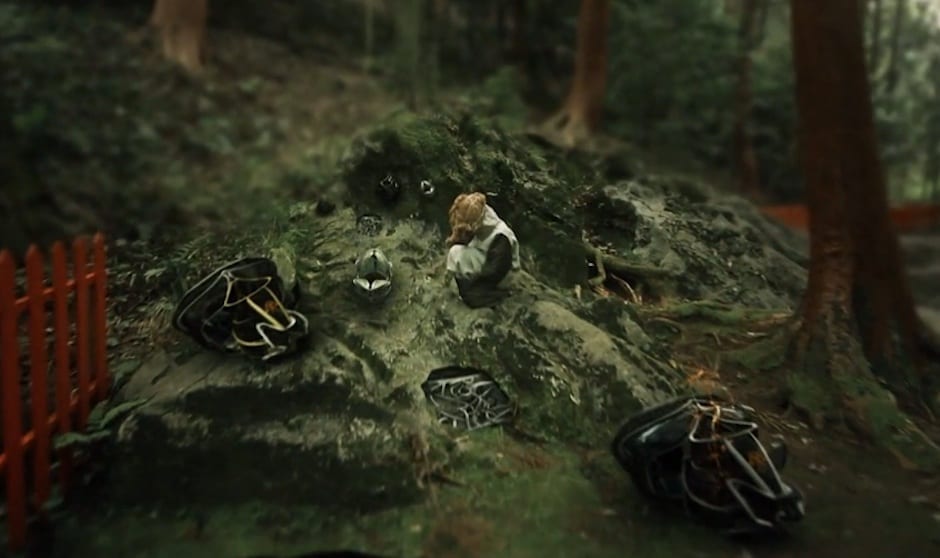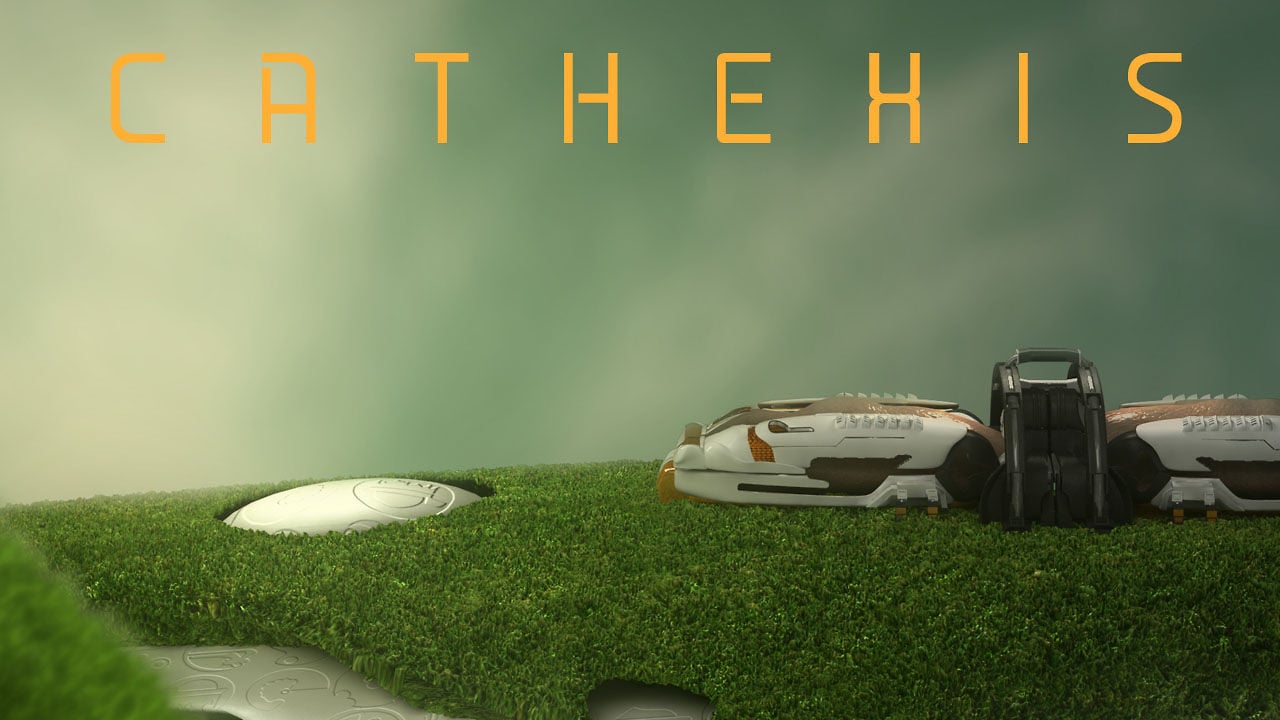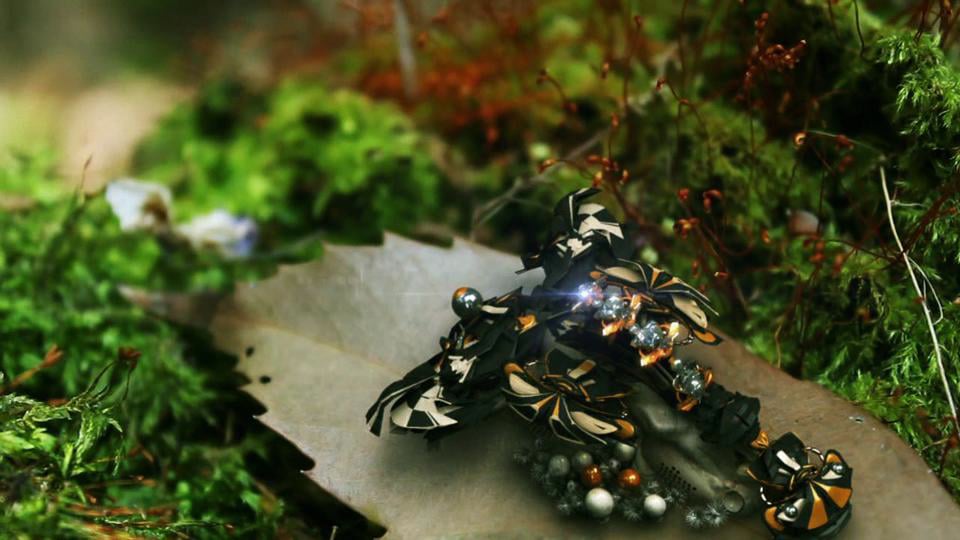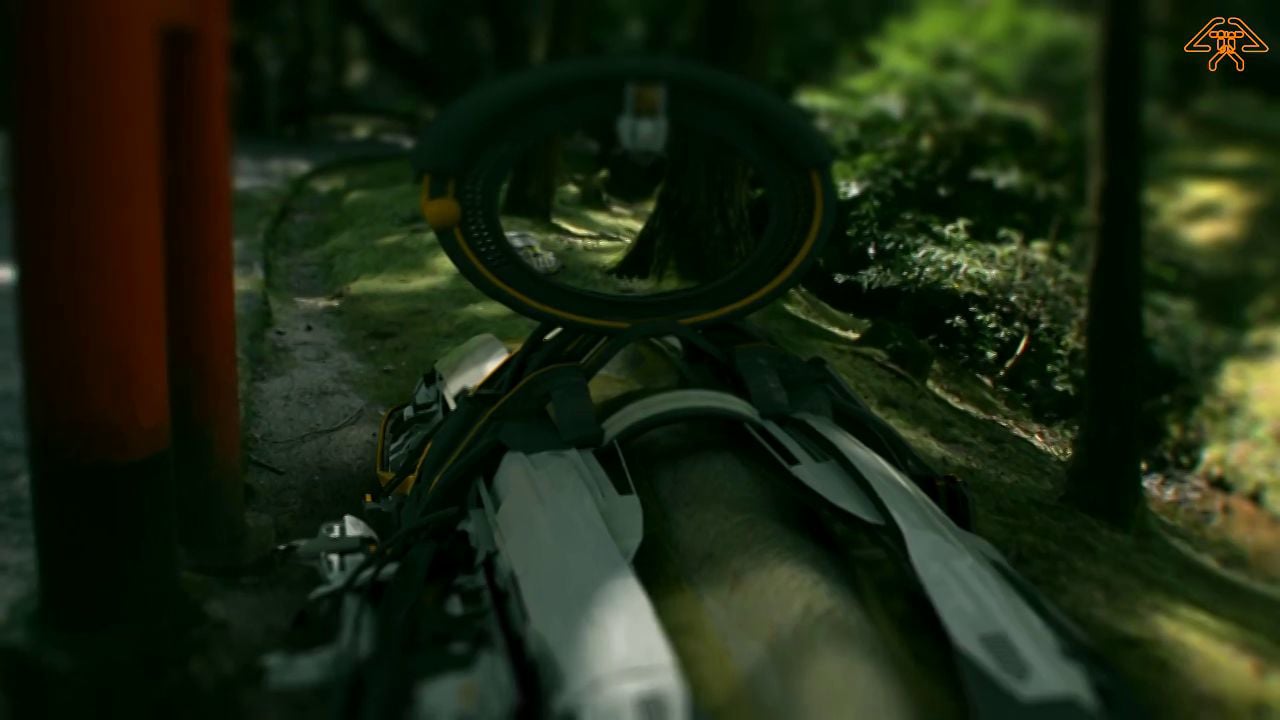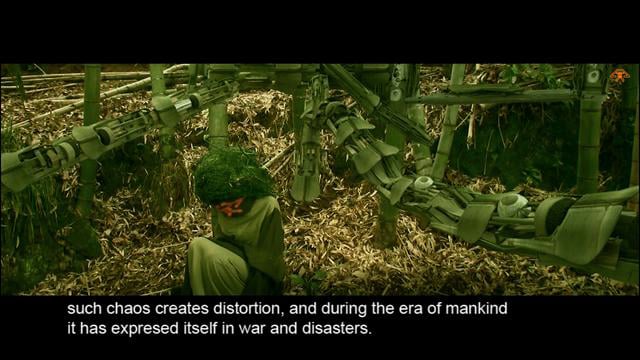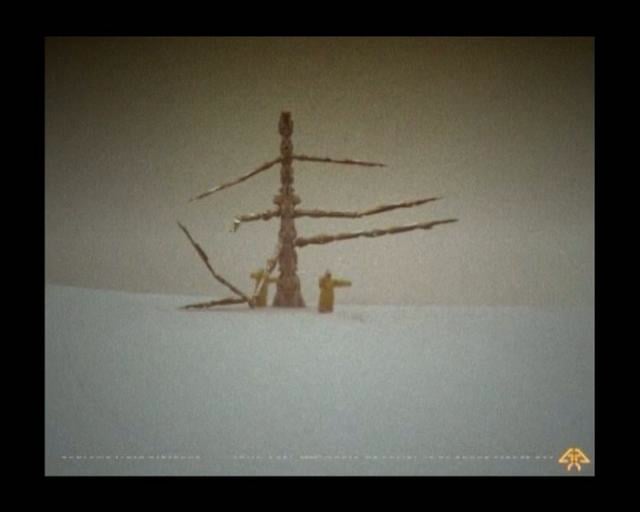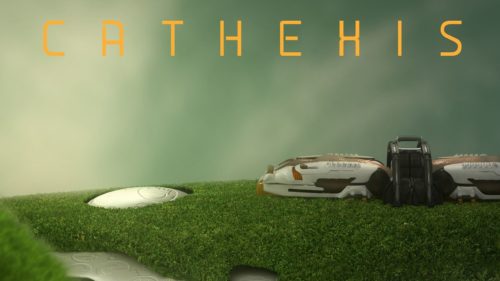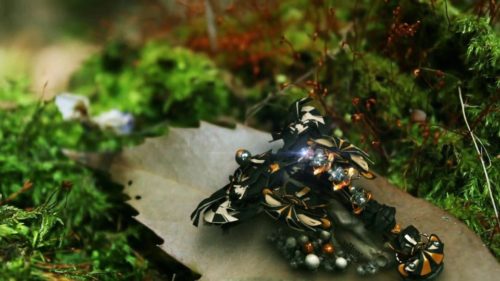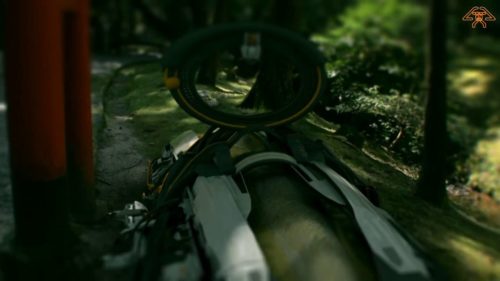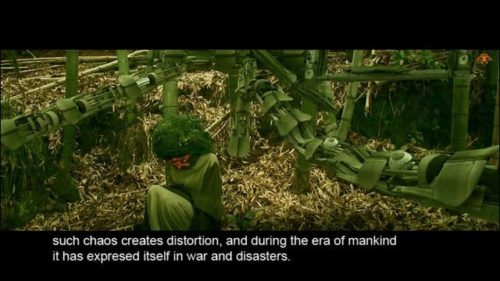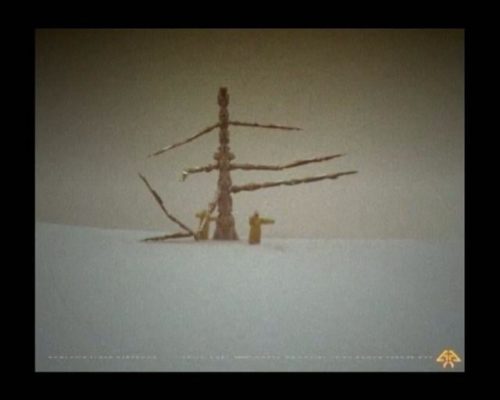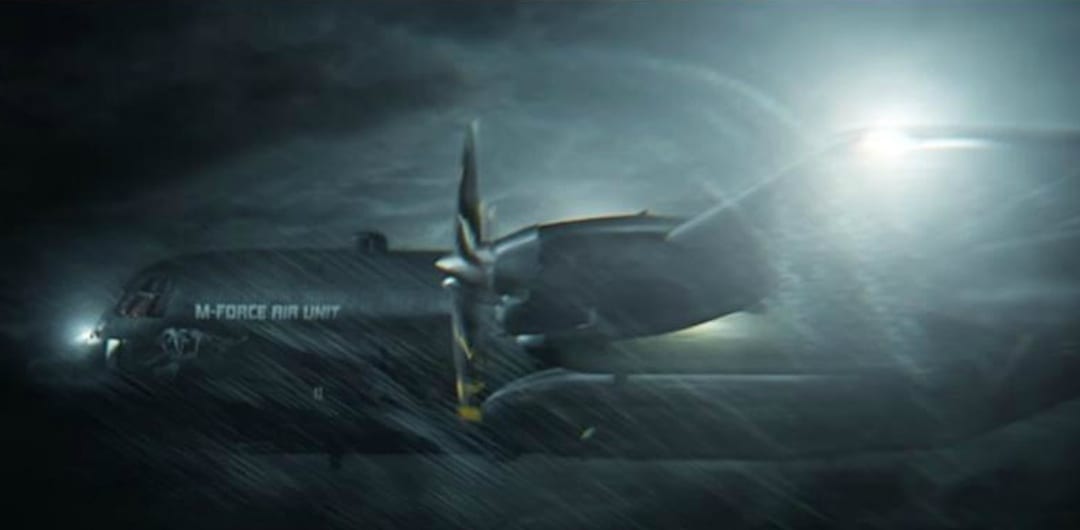Could you tell us about the AUJIK collective please?
Physically, it mainly consists of one person, that’s me, Stefan. I was born in Sweden and now live outside of Kyoto in Japan.
Conceptually, AUJIK is an esoteric group of several members who work in independent clusters but can assemble into a larger unit.
AUJIK originated in the 80s and is currently in its third incarnation.
It is rumoured that most of the members are descendants of Yamabushis (ascetic hermit monks in ancient Japan). They strive to reach a higher consciousness by transcending with technology and nature using themselves as a catalyst between these elements.
I prefer to consider AUJIK as a concept and each video as a manifestation of their ideas.
It has been easier to perceive and accept a real divide between artificial intelligence or refined nature and primitive nature although viewing your work brings a fresh perspective. Can you please elaborate on this?
I’m fascinated about this idea that everything, no matter how synthetic it seems, is nature. Everything derives from nature even though we sometimes perceive it otherwise. To extend this idea I gave it an animistic character influenced by Shinto and various pagan beliefs.
As for AUJIK they make one distinction in their conception of nature; they divide it into Primitive (vegetation, soil, humans/animals etc.) and Refined (AI, robotic, nano-technology etc.) and create artefacts that are crossbreeds of these natures.
By transcending with the artefacts they can reveal unexplored parts of their minds that eventually will develop into new cognitive components and organs. They are also striving to achieve a state where the Primitive and Refined will emerge into an irreversible paradigm shift a bit similar to the Technological Singularity.
Goodness, what’s Technological Singularity?
TS started as an idea described by computer scientist and science fiction writer Vernor Vinge and it has also been adapted by inventor and future visionary Ray Kurzweil.
According to Kurzweil technology and humanity will transcend (or integrate) around 2045.
In his books ‘The Age of the Spiritual Machines” and “The Technological Singularity is Near” he explains very comprehensively about these scenarios and the many aspects it involves.
Are all of your videos connected, perhaps chronologically?
To a certain extent they are, but not necessarily chronologically. They all portray various aspects and reflections of AUJIK’s manifesto.
Can you elaborate by giving some examples?
The first video I made called YUKI shows two children playing with a robotic tree in a snowy landscape. It deals with interaction between organic and synthetic bodies and minds and questions who’s in control.
Some of the videos like ‘The Ishiyama Excursion’ typify some of AUJIK’s philosophy and transcendental (CGI) artefacts. The short film Cathexis which is the most ambitious project so far, is divided into five chapters with topics that all relate to the limbic system, cognitive neuroscience and Artificial General Intelligence.
For example, in a chapter called ‘Amygdala’, the AUJIK members perform various tasks with their artefacts or more specifically the amygdala in the artefact’s artificial limbic system.
The amygdala is the organ in the brain that regulates fear and even though in this case it’s artificial it is still being affected by external emotional inputs.
Another chapter is called ‘Qualia’ and deals with perceptions and the self.
The latest video entitled ‘Impermanence Trajectory: the Limbic Nest’ is a sort of complement to Cathexis concerning neuroscience – it has a slightly different perspective in that the universe is essential rather than the human being.
It is inspired by the idea and thesis about pan-computationalism, which can be described as “the universe as computational processing” in which all elementary particles possess a potential computational capacity.
For example, a rock consists of approximately ten trillion trillion atoms in a kilogram of matter which is equal to ca 1015 bits of Memory.
1.4: For us non-techie geeks here’s a brief definition of computation from Wikipedia: Computation is any type of calculation or use of computing technology in information processing.
Whereas pan-computationalism is a form of computation but instead of traditional (contemporary) computer hardware (cpu, ram, hard disc etc) it uses quantum physics. In theory it means that the whole universe could work as a computer. Ray Kurzweil describes this theory as “the awakening of an intelligent universe”.
Most of your videos feature music, and especially electronic music, how does music have an impact on your art?
Music has always been my biggest influence and most of my ideas come to life while I’m out walking and listening to music.
In the mid 90s I got really into electronic music such as Aphex Twin and Autechre and still mainly listen to that genre. I think initially I felt an urge to create something visual that had a similar atmosphere as that kind of music.
For the Cathexis project I collaborated with one of my favourite musicians called Christ (pronounced Chris-t). It was very inspiring and rewarding. During the work process I sent him sketches and early clips and he composed the score according to his vision. It later ended up as a soundtrack album release.
He also contributed music to three of my other videos. Other music artists I’ve used are Mira Calix, Boards of Canada, Chequerboard, SunnO))) and Jetlag. For the latest video, ‘Impermanence Trajectory: the Limbic Nest, I’ve made the music/sound myself, I’m a total layman but trying to get in to it more.
How does your creative process work?
Earlier it used to be more improvised and I started experimenting with some ideas and aesthetics and then eventually it turned into a video.
I have to mention though that many of my earlier works never reached the post-production stage. Nowadays I spend more time preparing and elaborating the content by writing and doing sketches. When I feel it’s worth evolving I start working on the computer doing 3D models and design.
Most of my videos are CGI integrated into film so I shoot at some point, taking HDR-pictures (used for lightning, reflections etc in 3D software). Then I motion track the footage and start to do tests.
From there it’s a long process doing animation, camera work and rendering. Cathexis, for example, took one year to complete and was filmed using green screen and motion tracking. Finally there’s the post-production, trying to get rid of all the glitches and mistakes and adding filters and effects. So far I’ve been doing all this myself.
The most inspiring aspect of the work is how the ideas behind the video develop as it forms.
Do you perceive AGI (Artificial General Intelligence) as being benevolent?
I think what we call AGI today will be our next step in evolution. Evolution according to Darwin’s theory of “survival of the fittest” has never been benevolent in a subjective perspective.
AGI will definitely render severe social problems and in a worst case scenario will be the end of our species and planet. I think no matter the consequences it is inevitable that it will accrue, especially considering the pace that science and technology have developed in the last 100 years.
I guess if there was social equality as well as no fundamental religion it would probably be a smooth shift, but it seems that with the current state of the world it will not be so.
It’s intriguing to listen to people’s visions working in this field, like Ray Kurzweil being optimistic and almost naive and people like Hugo de Garis gabble about an apocalypse and gigadeath. I appreciate and listen to a scientist called Ben Goertzel who I guess is also most associated with the term AGI.
How do you see the future in media?
Probably the expression “the future ain’t what it used to be” is a bit worn out, but I reckon it sums it up better than any other analysis.
What are you up do next?
As for exhibitions I’m currently part of a group exhibition called Nordic Outbreak (organised by the Streaming Museum) in New York City (2-25 April).
It’s a presentation of Nordic media artist such as Jesper Just, Björk/Andrew Thomas Huang and Superflex. It will then tour the Nordic countries this fall at Kiasma Helsinki and other museums.
Three of my video works will also be featured at this year’s FILE – Electronic Language International Festival in Sao Paulo, Brazil from July to September.
As for work I’m having a little pause at the moment trying to figure whether I should start working on an illustrated book about AUJIK, or begin messing with EEG and motion capture devices heading for a more interactive form of art.
LINKS:
For work, CV, information and upcoming exhibitions see:
https://www.q-n-q.com
